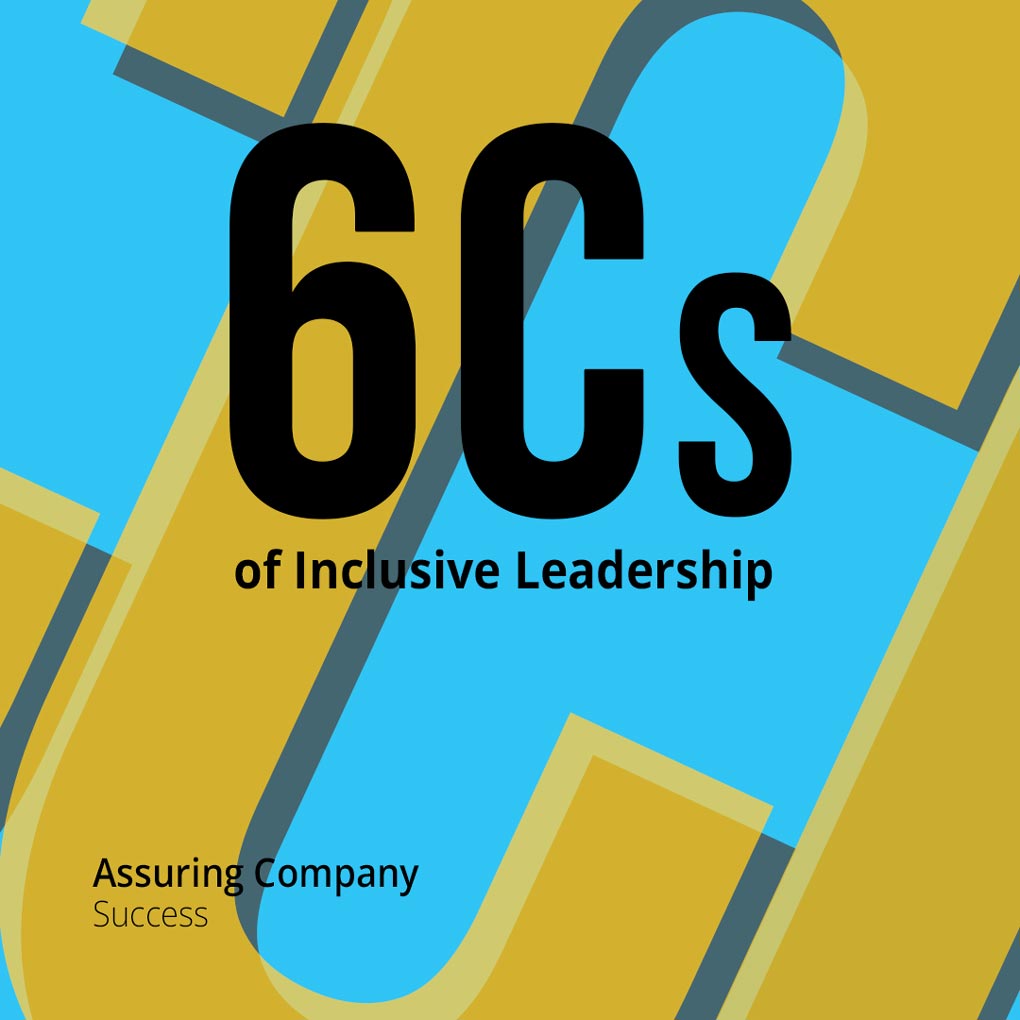CATEGORIES
#Entrepreneurship #Inclusion and Impact #Work CultureOverview:
- The workplace has undergone fundamental changes in the last 50 years.
- Inclusive leadership lies at the heart of such change, revolutionizing work culture.
- The 6 Cs of inclusive leadership is a set of traits that every leader in the contemporary workplace must have.
In a highly heterogeneous society, inclusivity and diversity are key elements to ensure success in the workplace. Leaders all around the world are actualizing this importance and incorporating diversity and inclusion training and strategies.
There has been a fundamental change in the workplace in the last 50 years. The change and influence also mean change in the attitude of leadership. Leadership, especially inclusive leadership is vital to maintain harmony and motivate any workforce.

What is Inclusive Leadership?
Inclusive leadership promotes and accepts inclusivity and diversity in the workplace. Inclusive leaders are empathetic and kind. This applies to all the workforce, regardless of any position.
Inclusive leaders can build a safe, diverse, and encouraging workspace. It is a space where the employees are quick to voice their concerns and needs. A space that accepts fresh ideas and outlooks. Increasingly, workspaces are adopting inclusive leadership styles that benefit both the company and the employees.
Six Cs of Inclusive Leadership – What, and Why?
With a change of ideas and market diversity, corporate spaces are increasingly becoming more liberal. Inclusivity and diversity have been fundamental aspects of corporate culture in recent years.
How is this useful? Inclusivity and diversity have resulted in the following:
- Market expansion
- Profit
- Decision-making power
- Performance outcomes
- An optimistic and motivated workforce
Inclusive leadership styles have been the impetus for this transition, even though diversity and inclusion strategies have been able to guarantee them.
So what are the features of inclusive leadership? According to a report by Deloitte, there are six significant traits of an inclusive leader. These can be characterized by the six Cs. Let us have a look at each of them.

Commitment
To scale up any business, a leader must be committed to accepting fresh ideas and change. In a rapidly changing modern world, commitment plays a huge role. This spans from sustaining the morality of any company to ensuring profitability.
Inclusive leaders should be therefore committed to:
- fostering an inclusive and diverse community.
- accepting and promoting fresh ideas.
- Betterment of the workforce and the client.
- Adopting self-improvement.
Courage
Integrating an inclusive and diverse workspace is not possible without courageous leadership and management. A company culture should be aware of its shortcomings. The courage to tackle them with effective management styles will guarantee a solid foundation for any business.
Courage also should be about owning to one’s own mistakes and taking feedback. Sometimes, courage takes the form of acknowledging the lack of inclusion in the workplace as well. This will encourage and motivate any workforce to work for the better and not just act with self-interest.
Cognizance of Bias
While everyone has their own unconscious biases, one must reassess them. Being a leader, one strives for continuous self-improvement. In such circumstances, negating any cognizance of bias is perhaps one of the most important traits of the overall 6Cs.
One of the most common biases starts with not assigning important leadership roles to women. Statistics of women in the workplace showcase that the increased involvement of women has led to better profitability.
Fair leaders are the ones who are aware of this. A leader who is focused on achieved status instead of ascribed status. Ascribed status is one’s race, ethnicity, gender, et cetera. A merit-based culture that promotes equality and freedom should be a leader’s goal.
To eliminate bias, the leader must adopt transparency and effective communication. Tolerating differences and fostering a truly diverse and inclusive workspace will allow for room for everyone to grow.
Curiosity
Curiosity to find modern solutions to workspace difficulties has substantially grown any organization.
An inclusive leader is fearless in adapting to a rapidly changing world. Top leaders around the world have had creative approaches that led them to be pioneers in their field.
Curiosity entails to:
- Adopting new technology.
- Unconventional ideas and methods.
- Openness to change.
- Hindsight for future trajectory.

Cultural Intelligence
To be culturally responsive and inclusive is one of the most important traits of an inclusive leader. Being diverse and having cultural intelligence can yield tremendous results. It can lead to better communication, a happier workforce, the potential of being global, and more.
Cultural intelligence can be observed as:
- Being respectful to every culture.
- Being aware of potential markets in a global diaspora.
- Cross-cultural communication and team-building exercises to ensure this.
- Being aware of internal prejudices that can hurt the sentiments of any community.
- Finding joy in learning more about other cultures.
Collaboration
Harmonious collaboration between leaders and their workforce can build a solid foundation for any company. An entrepreneur who is starting their venture should begin with collaborative efforts.
Collaboration of this sort will result in:
- Effective communication.
- It will stop the workplace from being toxic.
- encouraging employee retention.
- Fresh ideas.
- Better crisis management.
Conclusion:
Inclusive leadership is increasingly becoming more popular in the contemporary workplace. A leader is not born but is created through many struggles. This incorporates taking feedback, respecting one another, and most importantly empathy.
FAQs:
How can the 6Cs of inclusive leadership help a business?
The 6Cs of inclusive leadership can bring a sense of unity and coherence in the workplace. These qualities embedded in leadership management can help motivate employees and result in overall productivity in the workplace.
How can a leader avoid unconscious bias in the workplace?
Unconscious bias is common in workplaces with a larger workforce and hierarchical leadership. The first step to avoiding unconscious bias in the workplace as a leader is acknowledging and understanding where it stems from. Secondly, one should promote diversity and inclusion in the workplace. Thirdly, Leaders should create a workspace that allows employees to express themselves and their opinions freely.
What are some of the traits of a toxic workplace?
Some of the traits of a toxic workplace are:
- Micromanagement.
- Rigid hierarchy in management.
- Discouraging fresh and innovative ideas.
- Lack of appropriate incentive and acknowledgment.
- Unregulated work hours.


